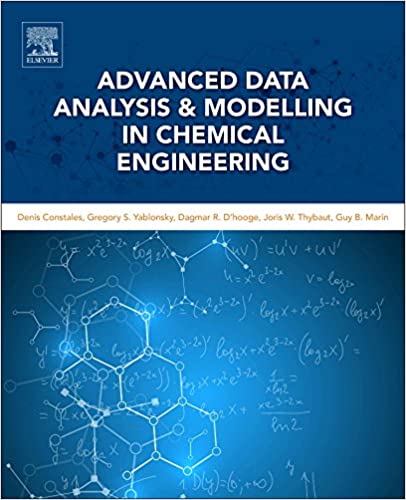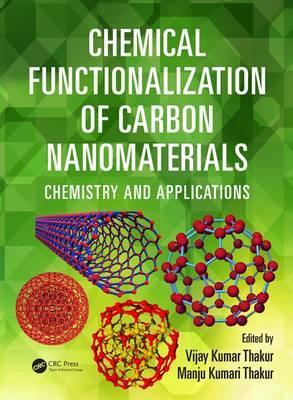Advanced Data Analysis & Modelling in Chemical Engineering
Original price was: ₹10,032.14.₹8,025.71Current price is: ₹8,025.71.
ISBN: 9780444594853
Author/Editor: Denis Constales
Publisher: Elsevier
Year: 2017
1 in stock (can be backordered)
Description
Advanced Data Analysis and Modeling in Chemical Engineering provides the mathematical foundations of different areas of chemical engineering and describes typical applications. The book presents the key areas of chemical engineering, their mathematical foundations, and corresponding modeling techniques.
Modern industrial production is based on solid scientific methods, many of which are part of chemical engineering. To produce new substances or materials, engineers must devise special reactors and procedures, while also observing stringent safety requirements and striving to optimize the efficiency jointly in economic and ecological terms. In chemical engineering, mathematical methods are considered to be driving forces of many innovations in material design and process development.
Presents the main mathematical problems and models of chemical engineering and provides the reader with contemporary methods and tools to solve them
Summarizes in a clear and straightforward way, the contemporary trends in the interaction between mathematics and chemical engineering vital to chemical engineers in their daily work
Includes classical analytical methods, computational methods, and methods of symbolic computation
Covers the latest cutting edge computational methods, like symbolic computational methods
Additional information
| Weight | 1.01 kg |
|---|
Product Properties
| Year of Publication | 2017 |
|---|---|
| Table of Contents | Preface Our Team Chapter 1: Introduction Abstract 1.1 Chemistry and Mathematics: Why They Need Each Other 1.2 Chemistry and Mathematics: Historical Aspects 1.3 Chemistry and Mathematics: New Trends 1.4 Structure of This Book and Its Building Blocks Chapter 2: Chemical Composition and Structure: Linear Algebra Abstract 2.1 Introduction 2.2 The Molecular Matrix and Augmented Molecular Matrix 2.3 The Stoichiometric Matrix 2.4 Horiuti Numbers 2.5 Summary Appendix The RREF in Python Chapter 3: Complex Reactions: Kinetics and Mechanisms ?Ordinary Differential Equations ?Graph Theory Abstract 3.1 Primary Analysis of Kinetic Data 3.2 Material Balances: Extracting the Net Rate of Production 3.3 Stoichiometry: Extracting the Reaction Rate From the Net Rate of Production 3.4 Distinguishing Kinetic Dependences Based on Patterns and Fingerprints 3.5 Ordinary Differential Equations 3.6 Graph Theory in Chemical Kinetics and Chemical Engineering Chapter 4: Physicochemical Principles of Simplification of Complex Models Abstract 4.1 Introduction 4.2 Physicochemical Assumptions 4.3 Mathematical Concepts of Simplification in Chemical Kinetics Chapter 5: Physicochemical Devices and Reactors Abstract 5.1 Introduction 5.2 Basic Equations of Diffusion Systems 5.3 Temporal Analysis of Products Reactor: A Basic Reactor-Diffusion System 5.4 TAP Modeling on the Laplace and Time Domain: Theory 5.5 TAP Modeling on the Laplace and Time Domain: Examples 5.6 Multiresponse TAP Theory 5.7 The Y Procedure: Inverse Problem Solving in TAP Reactors 5.8 Two- and Three-Dimensional Modeling 5.9 TAP Variations 5.10 Piecewise Linear Characteristics 5.11 First- and Second-Order Nonideality Corrections in the Modeling of Thin-Zone TAP Reactors Chapter 6: Thermodynamics Abstract 6.1 Introduction 6.2 Chemical Equilibrium and Optimum 6.3 Is It Possible to Overshoot an Equilibrium? 6.4 Equilibrium Relationships for Nonequilibrium Chemical Dependences 6.5 Generalization. Symmetry Relations and Principle of Detailed Balance 6.6 Predicting Kinetic Dependences Based on Symmetry and Balance 6.7 Symmetry Relations for Nonlinear Reactions Appendix Chapter 7: Stability of Chemical Reaction Systems Abstract 7.1 Stability?eneral concept 7.2 Thermodynamic Lyapunov Functions 7.3 Multiplicity of Steady States in Nonisothermal Systems 7.4 Multiplicity of Steady States in Isothermal Heterogeneous Catalytic Systems 7.5 Chemical Oscillations in Isothermal Systems 7.6 General Procedure for Parametric Analysis Chapter 8: Optimization of Multizone Configurations Abstract 8.1 Reactor Model 8.2 Maximizing the Conversion 8.3 Optimal Positions of Thin Active Zones 8.4 Numerical Experiments in Computing Optimal Active Zone Configurations 8.5 Equidistant Configurations of the Active Zones Chapter 9: Experimental Data Analysis: Data Processing and Regression Abstract 9.1 The Least-Squares Criterion 9.2 The Newton-Gauss Algorithm 9.3 Search Methods From Optimization Theory 9.4 The Levenberg-Marquardt Compromise 9.5 Initial Estimates 9.6 Properties of the Estimating Vector 9.7 Temperature Dependence of the Kinetic Parameters k and Ki 9.8 Genetic Algorithms Chapter 10: Polymers: Design and Production Abstract Acknowledgments 10.1 Introduction 10.2 Microscale Modeling Techniques 10.3 Macroscale Modeling Techniques 10.4 Extension Toward Heterogeneous Polymerization in Dispersed Media 10.5 Extension Toward Heterogeneous Polymerization With Solid Catalysts 10.6 Conclusions Chapter 11: Advanced Theoretical Analysis in Chemical Engineering: Computer Algebra and Symbolic Calculations Abstract 11.1 Critical Simplification 11.2 ?inetic Dance? One Step Forward?ne Step Back 11.3 Intersections and Coincidences Index |
| Author | Denis Constales |
| ISBN/ISSN | 9780444594853 |
| Binding | Hardback |
| Edition | 1 |
| Publisher | Elsevier |
You must be logged in to post a review.






Reviews
There are no reviews yet.